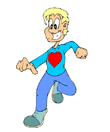SAD in long form is known as Seasonal Affective Disorder. This problem is most common during the winter months when there is lack of direct sunlight and normally recedes when the spring and summer months arrive. The symptom most often associated with SAD is depression for unknown reasons accompanied by a desire to sleep more and eat starchy, sweet foods.
 Many more cases of SAD are reported in countries with northern altitudes as they receive less sunlight than those around the equator. Additionally, many people who work evening and night shifts and sleep during the day have been noted to display similar characteristics as those found in SAD patients. This just further suggests the importance of sunlight on everyday function. Women and younger people tend to report the highest cases of SAD and most people report the disorder during the months of January and February.
Many more cases of SAD are reported in countries with northern altitudes as they receive less sunlight than those around the equator. Additionally, many people who work evening and night shifts and sleep during the day have been noted to display similar characteristics as those found in SAD patients. This just further suggests the importance of sunlight on everyday function. Women and younger people tend to report the highest cases of SAD and most people report the disorder during the months of January and February.
It wasn’t until the early 1980’s that this disorder was actually defined and became well known within the medical community. However, in the medical literature, SAD can read about as early as 1845.
Causes
So, what causes SAD and why does it appear and disappear in symphony with the sun’s rays? When it’s dark, the pineal gland, buried within the human brain, secretes a hormone called melatonin. In a cascade of events melatonin is responsible for the formation of serotonin – the sleeping hormone – and also for increased levels of depression. It makes sense then that when there is more darkness and less sunlight during the daytime hours, as is the case during the winter, that our brains increase the secretion of melatonin leading to an increased chance of developing symptoms of depression.
As soon as the sun begins shining more frequently and longer during the spring and summer months, the pineal gland slows its production of melatonin thus lifting the feelings of depression and heaviness from the body and mind.
Treatments
Treatments for SAD. There have been numerous treatments tried on SAD to include phototherapy, increasing the time spent in the sunlight during sunny, winter days, and also antidepressant drugs. The great thing about SAD is that it’s treatable. Unlike other forms of depression which aren’t linked to sunlight exposure SAD patients are many times helped with the use of bright lights which imitate the sun’s rays.
Light Therapy
Light therapy, also known as phototherapy, is actually the treatment of choice for SAD. The type of light used for SAD patients that has been shown to be most effective is intense fluorescent exposure measured at approximately 2500 lux (candle power) between one and three hours per day. Many therapists feel that the best time of the day to expose patients to the light is during the dawn hours. This gives the body the sensation of waking up along with the rising of the sun. The brain goes to work shutting down the production of melatonin and the patient wakes up less depressed than without the phototherapy.
Although the specific treatment intensity, duration and time is still under research, there doesn’t seem to be any doubt that phototherapy for SAD patients is a very viable method for decreasing seasonal depression.